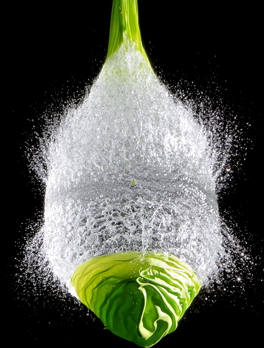 The main challenge during protein expression and purification is prevention of protein degradation. Whether it is an E.coli expression system or insect or mammalian, protein degradation should be minimized or avoided during purification of proteins. Protein expression at lower temperatures sometimes help in preventing the proteins from degrading. During cell lysis, proteins are exposed to harsh external conditions which result in degradation. Main reason for the protein degradation is the presence of various proteases in the cell itself.
The main challenge during protein expression and purification is prevention of protein degradation. Whether it is an E.coli expression system or insect or mammalian, protein degradation should be minimized or avoided during purification of proteins. Protein expression at lower temperatures sometimes help in preventing the proteins from degrading. During cell lysis, proteins are exposed to harsh external conditions which result in degradation. Main reason for the protein degradation is the presence of various proteases in the cell itself.
During protein purification cells are first suspended in lysis buffer with various additives before proceeding to cell lysis. Additives are of different types and most of them aid in protein solubility and stability. Apart from buffer and its pH, additives play a very important role in protein quality and yield, so one must know about these additives and their role in protein purification.
Additives can be classified into various types based on their nature such as salts, detergents, glycerol, glucose, metal chelators, metal ions, denaturants, ligands, reducing agents, and protease inhibitors.
- Salts: Salts such as Sodium Chloride, Potassium Chloride, Ammonium Sulphate are added to maintain the ionic strength of the buffer at 50-150 mM concentrations.
- Detergents: Non-ionic and ionic detergents such as Triton X-100, Tween-20, Sodium deoxycholate aid in solubilization of poorly soluble proteins and to prevent non specific interactions. 0.1-1 % are generally used concentrations.
- Glycerol: Glycerol at concentrations ranging from 5-15 % is usually added for stabilization of proteins.
- Sugars: Glucose or sucrose are added at 20-30 mM concentrations to stabilize lysosomal membranes and also reduces the release of proteases.
- Metal Chelators: Metals inhibit the activity of some proteins, in such cases metal chelators like EDTA, EGTA are added at 1-2 mM concentrations to chelate the metals. But these can not be used when IMAC columns are used for protein purification where metals like Nickel or Cobalt are required for affinity purification. They also help in decreasing oxidation damage and protease damage.
- Metal Ions: Magnesium ions, Zinc ions are added for stabilizing some proteins at 1-5 mM concentrations.
- Denaturants: Urea, Guanidine HCl etc are used to aid in solubilizing poorly soluble proteins by denaturing the proteins. But the protein structure can be refolded by removing the denaturant by dialysis.
- Ligands: GTP, ATP are used for stabilization of proteins at 1-10 mM concentrations.
- Reducing Agents: Reducing agents such as Dithiothreitol (DTT), Beta Mercaptoethanol (BME), DTE are added to decrease oxidation damage.
- Protease inhibitors: One of the most important additives in lysis buffer is Protease inhibitors. Protease inhibitor can either be a chemical compound or a peptide. Generally EDTA and PMSF are used for purification of E.coli proteins. Specific protease inhibitors are used to inhibit serine proteases, cysteine proteases, metalloproteases, aspartic proteases. Protease inhibitor cocktails are a mix of various protease inhibitors (Protease Arrest). Broad spectrum protection can be achieved by using Protease inhibitor cocktails available as tablets, dry powders, concentrated solution.
Most of the protease inhibitors are active in lysis buffers at pH 6.5 - 8.0. EDTA free protease inhibitor cocktail should be used for purifying metal dependent proteins and proteins that require metal during purification steps such as IMAC. One can make their own recipe by using separate protease inhibitors and making a cocktail required according to their need. Most of the protease inhibitors are active for 1-3 hours after adding in the buffer, but some proteins require additional use of protease inhibitors in all purification buffers.
References:
- Leibly DJ, Nguyen TN, Kao LT, Hewitt SN, Barrett LK, Van Voorhis WC (2012) Stabilizing Additives Added during Cell Lysis Aid in the Solubilization of Recombinant Proteins. PLoS ONE 7(12): e52482. https://doi.org/10.1371/journal.pone.0052482






